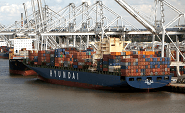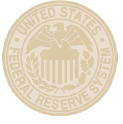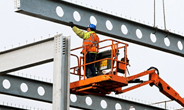Economy

Supply chains, end-users brace for impact from tariffs
Written by Stephanie Ritenbaugh
April 4, 2025
Now that the latest round of President Trump’s tariffs have been announced, supply chains are still working out what the implications are for their operations.
As Thomas Derry, CEO of the Institute for Supply Management (ISM) notes, the retaliatory tariffs announced April 2 were bigger than anticipated and it will take some time to analyze them.
The import taxes, ranging from 10% to 49%, have sent stocks plummeting this week and prompted countries like China and France to threaten retaliatory measures while other countries hope to negotiate a way through. So, even though the tariffs are on the table, there’s no guarantee that things still can’t change, again.
“There’s this reluctance to plan for circumstances that are seen as still being somewhat fluid,” Derry said. “The administration has only itself to blame for that, because up until now, tariff policies have been fluid.”
Alexandra Jopp, executive director of the American Metals Supply Chain Institute, said steel industry buyers are concerned about an increased risk of a wide-spread recession and overall steel demand destruction in 2025.
“While banks have only assigned a 30%-35% risk of recession for the year (so far) most people we are speaking to believe that a recession is far more likely this year than not,” Jopp said. “That is going to push them to keep inventories low.”
And buyers are bracing for costs to rise, from cars, due to the auto tariffs also enacted this week, to construction materials and consumer products.
“With half the cars on American roads being imports, there is nothing the domestic industry can do to scale up 100% to replace imports,” Jopp said. “They are going to increase prices because they can, and because they are going to need the extra revenue to finance new plants and workers across the nation.”
“Fast fashion, iPhones, appliances – all of these are going to see big jumps. Will people settle for buying less ‘stuff’? Will they take their loss of buying power out on congressmen?” Jopp said.
Ken Simonson, chief economist for the Association of General Contractors of America, noted that construction is more dependent on imports than most sectors, from building materials to lighting fixtures and appliances.
“The greatest damage to construction and the broader economy will come from retaliation by foreign governments and boycotts by their consumers and travelers,” Simonson said. “The actions President Trump has threatened, including huge fees on ships delivering materials to the US or picking up exports, as well as tariffs already announced, have greatly increased the likelihood of higher inflation and flat or negative growth – stagflation, in short.”
Reshoring
With companies moving operations offshore over the last 30 years, there have been consequences to that globalized supply chain.
But, Derry pointed out, that imposing harsh tariffs won’t return world economies to a pre-globalization era.
“The genie is out of the bottle,” Derry said.
“Even to the extent that we bring some manufacturing back to the shores of the United States, it’s not the same manufacturing,” he said, noting that factories are high-tech and automized, requiring different skill sets from workers.
“The idea that you’re going to recreate the manufacturing environment of the 1960s just isn’t going to happen. Economies move on; technology advances,” Derry said.
“We might be adding manufacturing jobs in some communities, and I understand that many communities have suffered real pain have not yet recovered from the hollowing out of manufacturing the United States,” Derry added. “I don’t mean to discount that at all, but at the same time, we’re asking every consumer in this country to pay more for everything.”
Jopp said one concern she hears from members is whether the government can commit to a tariff plan like this for four to eight years until factories are built domestically.
“There are not enough factories, workers, or time to replace all of the imports affected by these rules,” Jopp said. “The most fundamental rule of economics, supply and demand, means that prices have to go up in response.”
Jopp concluded: “They as consumers are going to pay the price and that means less of everything they have become accustomed to buying at stores, dealerships, etc.”

Stephanie Ritenbaugh
Read more from Stephanie RitenbaughLatest in Economy

Architecture billings continue to slide in March
Architecture firms said billings continued to decline in March, according to the latest Architecture Billings Index (ABI) released by the American Institute of Architects (AIA) and Deltek.

Beige Book shows concerns about trade policy
Manufacturing was mixed, but two-thirds of districts said activity was little changed or had declined.

New York state manufacturing index drops again in April
Firms were pessimistic, with the future general business conditions index falling to its second lowest reading in the more than 20-year history of the survey

Construction adds 13,000 jobs in March
The construction sector added 13,000 jobs, seasonally adjusted, in March, but tariffs could undermine the industry.
